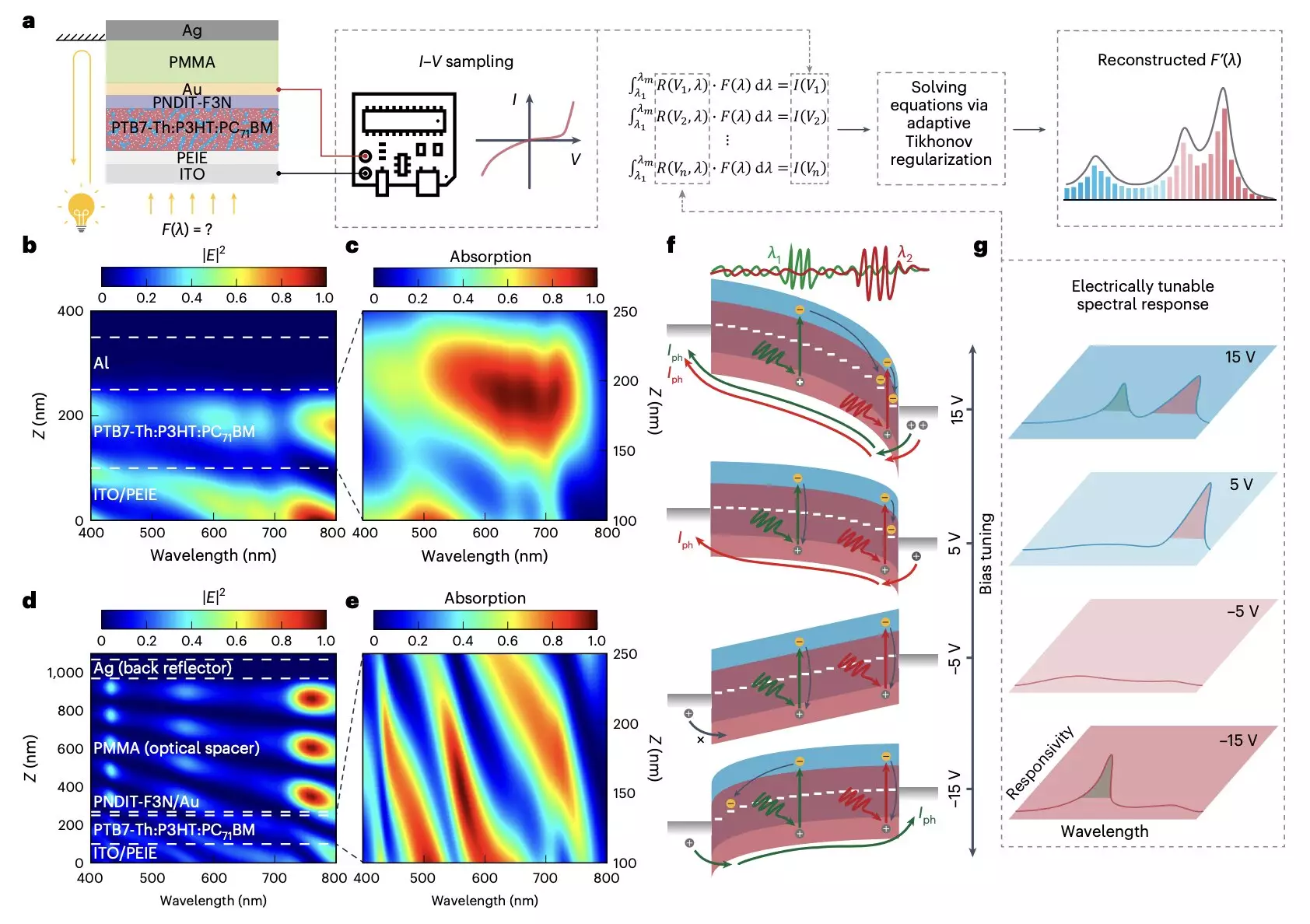Optical spectrometers play a crucial role in measuring and analyzing light properties across the electromagnetic spectrum. Traditionally, these instruments have been associated with bulky and expensive designs, limiting their use to specialized facilities. However, in recent years, there has been a growing trend towards developing more compact and affordable optical spectrometers that can be deployed on a large scale.
The Innovative Design
Researchers at the Chinese University of Hong Kong and other institutes in China have recently introduced a micro-sized, portable, and cost-effective optical spectrometer. This alternative spectrometer utilizes an organic photodetector with a bias-tunable spectral response, offering a novel approach to spectrometer design. By manipulating the wavelength-dependent location of photocarrier generation in photodiodes, the team was able to create a photomultiplication-type organic photodetector (PM-OPD) with impressive capabilities.
The key to the success of the new optical spectrometer lies in the unique trilayer contact used in its design. By combining a transparent back contact, an optical spacer, and a back reflector, the researchers were able to achieve a compact footprint of 0.0004 cm2. The spectrometer operates across the entire visible wavelength with a sub-5-nm resolution, demonstrating the effectiveness of the innovative approach.
In rigorous testing, the miniaturized optical spectrometer proved to be highly efficient, operating across the entire visible spectrum regime with remarkable resolution. The researchers also demonstrated its potential for hyperspectral imaging by fabricating an 8 x 8 spectroscopic sensor array. This technique has broad implications for detecting unique spectral signatures of specific objects, highlighting the versatility of the new design.
The development of micro-sized and cost-effective optical spectrometers opens up new possibilities for a wide range of applications, including portable and wearable devices. The innovative approach introduced by the Chinese researchers could pave the way for the creation of cutting-edge technologies that advance research and medical practices. By making optical spectrometers more accessible and practical, this new design has the potential to revolutionize the field of spectroscopy.


Leave a Reply